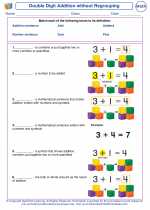Double Digit Addition without Regrouping
Double digit addition is the process of adding two numbers together where each number is composed of two digits. When adding double digit numbers without regrouping, each place value (ones and tens) is added separately, and then the sum of the ones and the sum of the tens are combined to get the final result.
Here's an example:
Let's add 24 and 17 together:
24 + 17 _____ 41
First, we add the ones place (4 + 7 = 11). Since 11 is a double-digit number, we write down the ones place (1) and carry over the tens place (1) to the next column. Then, we add the tens place (2 + 1 = 3). So, the final result is 41.
When adding double digit numbers without regrouping, it's important to keep the place values separate and carry over any extra tens when the sum of the ones place is greater than 9.
Practicing with various examples will help reinforce the concept of double digit addition without regrouping.
I hope this explanation helps! Let me know if you have any other questions.
.◂Math Worksheets and Study Guides Second Grade. Double Digit Addition without Regrouping
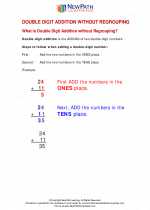
 Worksheet/Answer key
Worksheet/Answer key
 Worksheet/Answer key
Worksheet/Answer key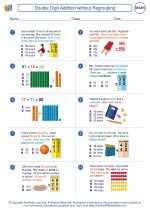
 Worksheet/Answer key
Worksheet/Answer key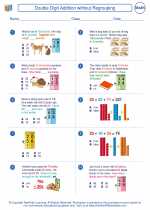
 Worksheet/Answer key
Worksheet/Answer key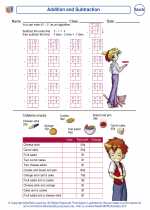
 Worksheet/Answer key
Worksheet/Answer key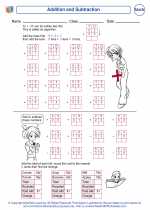
 Vocabulary/Answer key
Vocabulary/Answer key